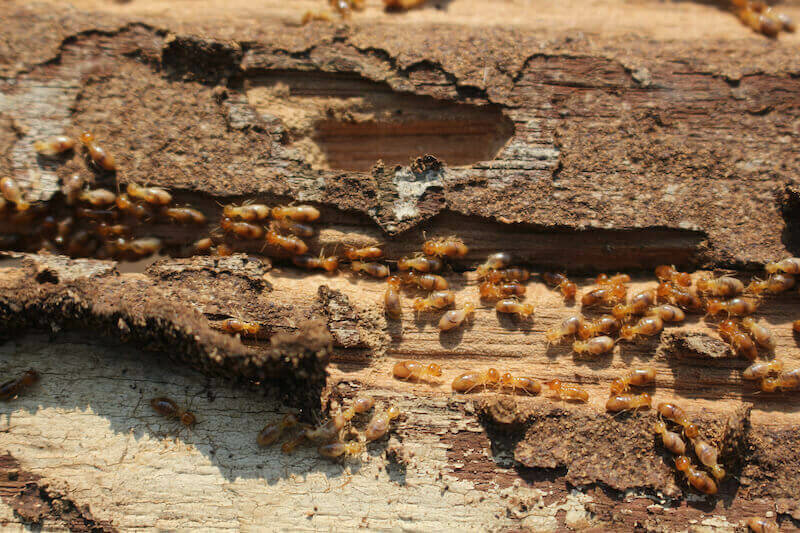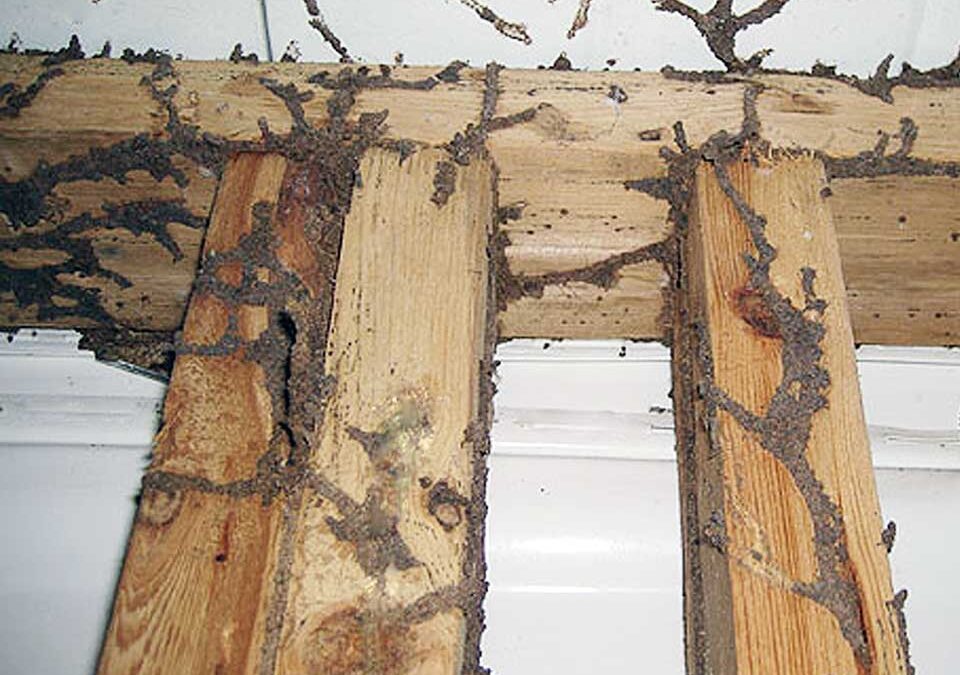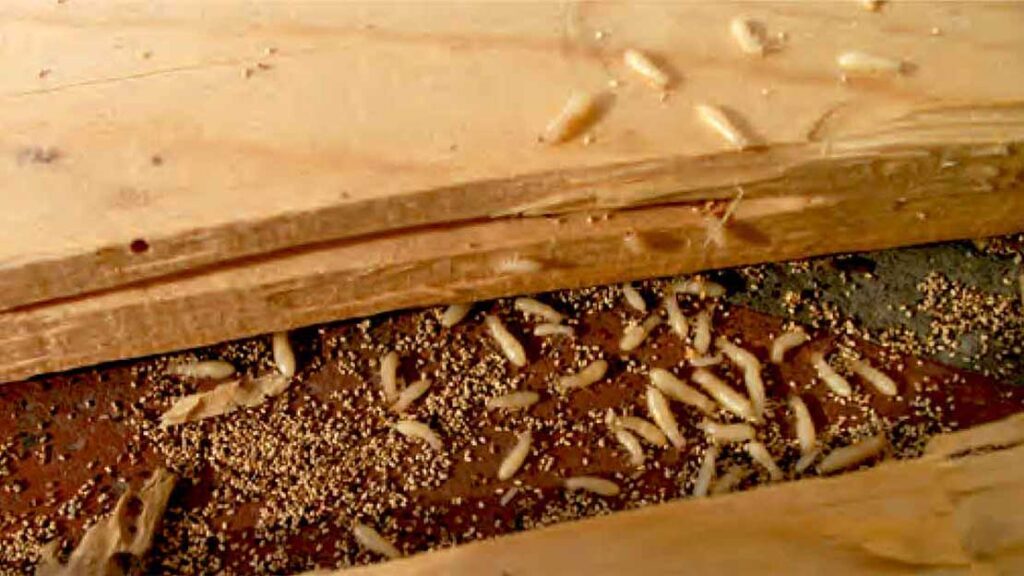Termite Removal Services by Pest Control Xperts in San Luis Obispo
Serving homes, apartments, dormitories, hotels, and healthcare offices throughout San Luis Obispo, Morro Bay, Cayucos, Avila Beach, Los Osos, Pismo Beach, Grover Beach, Oceano, Arroyo Grande, Guadalupe, Nipomo, California, and Surrounding Areas
Professional Termite Control for San Luis Obispo, Paso Robles & Arroyo Grande: Permanent Colony Elimination and Wood Preservation
You find a pencil-thin mud tube creeping up your foundation or discover a tiny pile of sand-like pellets on your windowsill. That moment of discovery triggers instant fear. You may clean it away or spray a spot treatment, hoping for the best. Yet, this quick action provides a temporary **illusion of control undone by the hidden, expanding termite colony** silently eating your home from the inside out. For property owners in **San Luis Obispo, California**, and nearby communities like **Paso Robles**, **Arroyo Grande**, **Atascadero**, and **Los Osos**, **Termite infestation** is a year-round threat that can lead to severe **structural damage**. At **San Luis Obispo Pest Control Xperts**, we understand that your house is your most valuable asset. We provide expert **Termite control** that uses advanced, targeted **professional Termite treatment** to eliminate the colony at its source and secure the integrity of your structure.
Why Termite Appear in San Luis Obispo and Surrounding Communities
The Central Coast region is a hotspot for multiple types of **wood-destroying insects**. The mild climate, moisture factors, and specific local architecture combine to create perfect conditions for **Termite infestation** to take hold and persist, necessitating specialized **pest control for Termite**.
Local Climate and Geographical Triggers
- Year-Round Subterranean Threat: The mild, non-freezing climate of **San Luis Obispo** and **Arroyo Grande** allows **subterranean Termite** colonies to remain active and forage 24/7, 365 days a year. These termites live in the soil beneath your home and require constant moisture to survive.
- The Coastal Moisture Factor: **Dampwood Termites** and moisture-loving fungi thrive in the cool, humid coastal air of areas like **Los Osos**. Any wood in contact with the soil, or wood decayed by dry rot, becomes an immediate target for these **wood-destroying insects**, signaling a moisture problem that must be resolved alongside **Termite treatment**.
- Seasonal Swarms: Termite activity peaks during swarming periods, which often occur after rainstorms for **subterranean Termites** and in late summer/fall for **Drywood Termites**. The discovery of winged swarmers, or discarded wings, is a definitive **sign of a major Termite infestation** and demands immediate **Termite inspection**.
Architecture and Infestation Vulnerabilities
- Historic and Older Homes: The charming, historic structures in downtown **San Luis Obispo** and the **Village** of **Arroyo Grande** are highly vulnerable. Older, non-pressure-treated wood, coupled with foundation cracks and poor crawl space ventilation, provides ideal **entry points** and nesting sites for all **Termite Species**.
- Wood-to-Soil Contact: Many properties in the region, particularly decks, fences, and older homes without modern perimeter protection, have direct wood-to-soil contact. This creates an open invitation for **subterranean Termites** to build their protective **Termite trails** (mud tubes) into the structure.
- Attic and Eave Vulnerability: Homes throughout **Paso Robles** and **Atascadero** are susceptible to **Drywood Termite** infestations in the roof structure, fascia, and eaves. Swarmers are attracted to exposed wood in these high, dry areas during their seasonal flight, easily establishing **Termite nests** without any soil contact.
Types of Termite Commonly Found in the Central Coast Region
There are no pests known as “carpenter Termite” or “pharaoh Termite.” The primary threats requiring expert **Termite control** in **San Luis Obispo County** are the **Drywood** and **Subterranean Termites**, each with a distinct and destructive profile.
Subterranean Termites (Reticulitermes hesperus)
- Identification: Workers are pale white; swarmers are dark with wings of unequal size that they shed after swarming.
- **Behavior:** They live in massive **colony elimination** underground, sometimes numbering in the millions. They build distinctive **Termite trails** (mud tubes) from the soil to the wood to protect themselves from dry air.
- **Risk:** They cause extremely rapid and widespread **structural damage**, creating a honeycomb-like appearance within the wood and leaving dirt inside the tunnels. They are responsible for the vast majority of **Termite damage** in the region.
Drywood Termites (Incisitermes minor)
- Identification: Workers are not seen; swarmers are slightly larger than **subterranean Termites** with wings of equal length. They are identified primarily by their **frass**.
- **Behavior:** They live entirely within the dry wood they infest, requiring no contact with soil or external moisture. They form smaller, multiple **satellite colonies** within the structure.
- **Risk:** They bore clean, smooth tunnels through the wood. The telltale sign is the **frass**, which are tiny, hard, hexagonal fecal pellets they kick out of small “kick-out” holes, often accumulating in small piles on windowsills or floors.
Problems Termite Create for Homes and Businesses
An undetected **Termite infestation** in **San Luis Obispo** poses a serious risk to your financial security, far exceeding the annoyance of other pests.
- **Catastrophic Structural Damage:** Termites are silent destroyers. They consume cellulose 24/7, compromising wood beams, support posts, and framing, which can lead to expensive **structural damage** and potentially structural failure if left unchecked for years.
- **Compromised Property Value:** Discovery of active **Termite infestation** or historical **Termite damage** significantly impacts the **trustworthiness** and value of a property during sales. A clear **Termite inspection** report is essential for real estate transactions.
- **Risk to Health (Indirect):** Though termites are not known to transmit disease directly, the moisture issues and wood decay they cause can promote the growth of mold and mildew, leading to indoor air quality problems and indirect health risks.
- **Unseen Expense:** **Termite Problems** require specialized materials and techniques for repair and **treatment**. Waiting even a few months after finding **signs of a major Termite infestation** can translate into thousands of dollars in additional repair **structural damage**.
Signs of an Escalating Termite Infestation
**What are the signs of a major Termite infestation?** Recognizing these indicators immediately is the most crucial step in minimizing **Termite damage** to your home in **Paso Robles** or **Atascadero**.
- 1. Mud Tubes or Termite Trails: Pencil-sized tunnels made of mud and dirt running along foundations, sub-floors, or interior walls. This is definitive proof of active **subterranean Termite** movement.
- 2. Discarded Wings: Finding small piles of translucent, shed wings, often near windowsills, door frames, or spiderwebs. Swarmers shed their wings after finding a mate and establishing a new **Termite colony**.
- 3. Frass (Fecal Pellets): Tiny, sand-like, hard, hexagonal pellets found in small piles, often on horizontal surfaces below wooden beams or furniture. This is the telltale sign of **Drywood Termite** activity.
- 4. Hollow-Sounding or Damaged Wood: Tapping on wood that sounds dull or hollow. This indicates termites have consumed the interior, leaving only a thin veneer of wood or paint on the surface. Look for bubbling or peeling paint that is not water damage.
- 5. Pinholes in Drywall or Wood: Tiny, almost undetectable holes in the surface of drywall or wood, which are often the “kick-out” holes used by **Drywood Termites** to expel their **frass**.
Why Professional Extermination is Essential for Termite Removal
The secretive, subterranean nature of termites makes DIY efforts futile. Attempting to **get rid of Termite** with store-bought sprays or foams provides a deceptive **illusion of control undone by the hidden, protected Termite colony** that remains safe below ground.
The Fatal Flaw of DIY Termite Control
- Repellent Barrier Failure: Consumer products only create a repellent barrier that kills a few termites but forces the rest of the **Termite colony** to simply navigate around the treated area to find an untreated **entry point**, continuing the **infestation** elsewhere in your home.
- Failure to Reach the Colony: **Subterranean Termite** queens and the primary nest are deep in the soil, sometimes several feet below the surface. Surface spraying cannot reach the **colony elimination** point, meaning the swarmers are simply replaced immediately by the endless breeding cycle.
- **Misidentification and Wrong Treatment:** Termites are often mistaken for flying **ants**. The homeowner then applies **ant treatment** which is completely ineffective against termites, allowing the **wood-destroying insects** to continue their damage unabated for months.
The Professional IPM Solution: Colony Elimination at the Source
**San Luis Obispo Pest Control Xperts** utilizes an **Integrated Pest Management (IPM)** approach that targets the entire **Termite colony**, focusing on deep penetration and long-term structural security. This is the only way to achieve definitive **Termite removal**.
- **Non-Repellent Soil Treatment:** We use professional-grade, non-repellent liquid products that termites cannot detect. Termites forage through this treated zone, unknowingly carrying the material back to the **Termite colony**, resulting in comprehensive **colony elimination** below ground.
- **Targeted Baiting Systems:** We install and monitor specialized **Termite baiting systems** around the perimeter. Termites consume the bait and share it with the queen, stopping the reproductive cycle entirely. This is highly effective for both **subterranean** and, in some cases, **Drywood Termites**.
- **Localized Professional Termite Treatment:** For **Drywood Termites**, we utilize localized treatments, such as injection of botanical or residual products into the **frass** kick-out holes and galleries, or the non-chemical use of **heat treatment** for attic or structural sections.
Our Termite Removal Method: A Strategic, Definitive Process
Our systematic method for **Termite control** is built on the highest level of structural **expertise** and regional **experience**, ensuring a permanent solution for your **San Luis Obispo** property.
Step 1: Comprehensive Termite Inspection and Damage Assessment
Our process begins with a meticulous **Termite inspection** of your structure in **San Luis Obispo** or **Paso Robles**. We use moisture meters, sounding techniques, and years of **expertise** to locate active mud tubes, **frass**, **entry points**, and areas of hidden **structural damage**, focusing on crawl spaces, attics, and foundation vulnerabilities.
Step 2: Customized Professional Termite Treatment Plan
We develop a customized **pest management** plan tailored to the specific **Termite Species** and the architecture of your home. This plan specifies the application of non-repellent liquid soil barriers (for subterranean), localized spot **treatment** (for drywood), or the use of **Termite baiting systems** to achieve definitive **colony elimination**.
Step 3: Precise Treatment Execution and Colony Elimination
We execute the **professional Termite treatment** plan with precision, ensuring the chosen material reaches the heart of the **Termite infestation**. This may involve creating a continuous liquid barrier around the foundation or meticulously injecting product into **Drywood Termite** galleries to stop the **wood-destroying insects** at the source.
Step 4: Structural Repair, Exclusion, and Monitoring
Following **extermination**, we advise on necessary structural repairs to wood decay caused by **Termite damage**. We install monitoring stations and conduct regular follow-up **Termite inspection** services to verify the effectiveness of the barrier and ensure lasting **Termite prevention**.
Why San Luis Obispo Relies on [City] Pest Control Xperts
We are the Central Coast’s premier authority for **Termite control**. Our **expertise** is rooted in understanding that both **Subterranean** and **Drywood Termites** are active threats here. We provide **trustworthiness** by focusing on non-repellent, **colony elimination** strategies, ensuring safe structural treatment that protects your home for the long term. Our systematic approach and meticulous attention to **Termite inspection** provide the definitive solution you need.
Do not let the fear of **Termite damage** paralyze you, leading to mounting repair expenses. That mud tube or pile of **frass** is a definitive sign that your past **DIY methods have been an illusion of control undone by the hidden, relentless colony**. **San Luis Obispo Pest Control Xperts** is ready to apply the specialized **expertise** and the definitive **professional Termite treatment** required to **get rid of Termite** completely, securing the structural integrity and value of your property. Contact us for an immediate consultation.
Service Area Reminder: We proudly serve **Termite control** clients throughout **San Luis Obispo**, **Paso Robles**, **Arroyo Grande**, **Atascadero**, and **Los Osos**. The relevant zip codes include 93401, 93405, 93446, 93420, 93422, 93402, and 93412.
Related Topics in Termite Control
The Critical Difference: Subterranean vs. Drywood Termite Treatment
**Termite control** requires accurate identification. **Subterranean Termites** are managed by creating a treated soil barrier around the foundation to achieve **colony elimination**. **Drywood Termites** are managed with localized injections of **professional Termite treatment** into the wood itself, or sometimes by full **fumigation**. Mistaking one for the other leads to costly, ineffective **pest control for Termite** and continued **structural damage**.
Termite Baiting Systems: Eliminating the Termite Colony Without Tenting
**Termite baiting systems** provide an effective, non-disruptive method for **colony elimination**. These systems are installed around the perimeter and contain a slow-acting material that foraging **wood-destroying insects** consume and carry back to the nest, eliminating the **queen** and the **Termite colony**. This method is often preferred in **San Luis Obispo** homes and businesses that wish to avoid the inconvenience of **fumigation**.
Structural Vulnerability: Wood-to-Soil Contact and Termite Entry Points
Any wood that contacts the soil provides a clear **entry point** for **subterranean Termites** to build their protective mud tubes. Our **Termite inspection** meticulously checks for and advises on correcting poor grade, buried wood debris, and improper landscaping. Eliminating wood-to-soil contact is a critical **exclusion techniques** step in long-term **Termite prevention**.
The Role of Moisture Control in Preventing Termite Damage
Excess moisture in crawl spaces, basements, and around foundations attracts both **subterranean Termites** and **Dampwood Termites**. Our **pest control for Termite** includes assessing ventilation and drainage issues, as resolving moisture problems is a fundamental component of **Termite prevention** and stops the conditions that invite **wood-destroying insects** to create **Termite nests** near your home.
Termite Inspection Frequency: Protecting Your Property from Termite Damage
**What are the signs of a major Termite infestation?** Unfortunately, by the time the signs are obvious (**frass**, swarmers, buckling paint), **Termite damage** is often extensive. Annual **Termite inspection** by a professional **Termite exterminator** is the only reliable form of **Termite prevention**, catching the hidden activity before it results in major **structural damage** that requires significant repair.
Heat Treatment for Drywood Termites: A Non-Chemical Solution
For contained **Drywood Termite** infestations, particularly in attics or isolated sections of a home in **Paso Robles** or **Atascadero**, thermal **heat treatment** offers a non-chemical **professional Termite treatment**. By raising the air temperature to a sustained, lethal zone, the heat penetrates the wood and achieves **colony elimination** of all **wood-destroying insects** without the disruption or residual concerns of a chemical approach.




